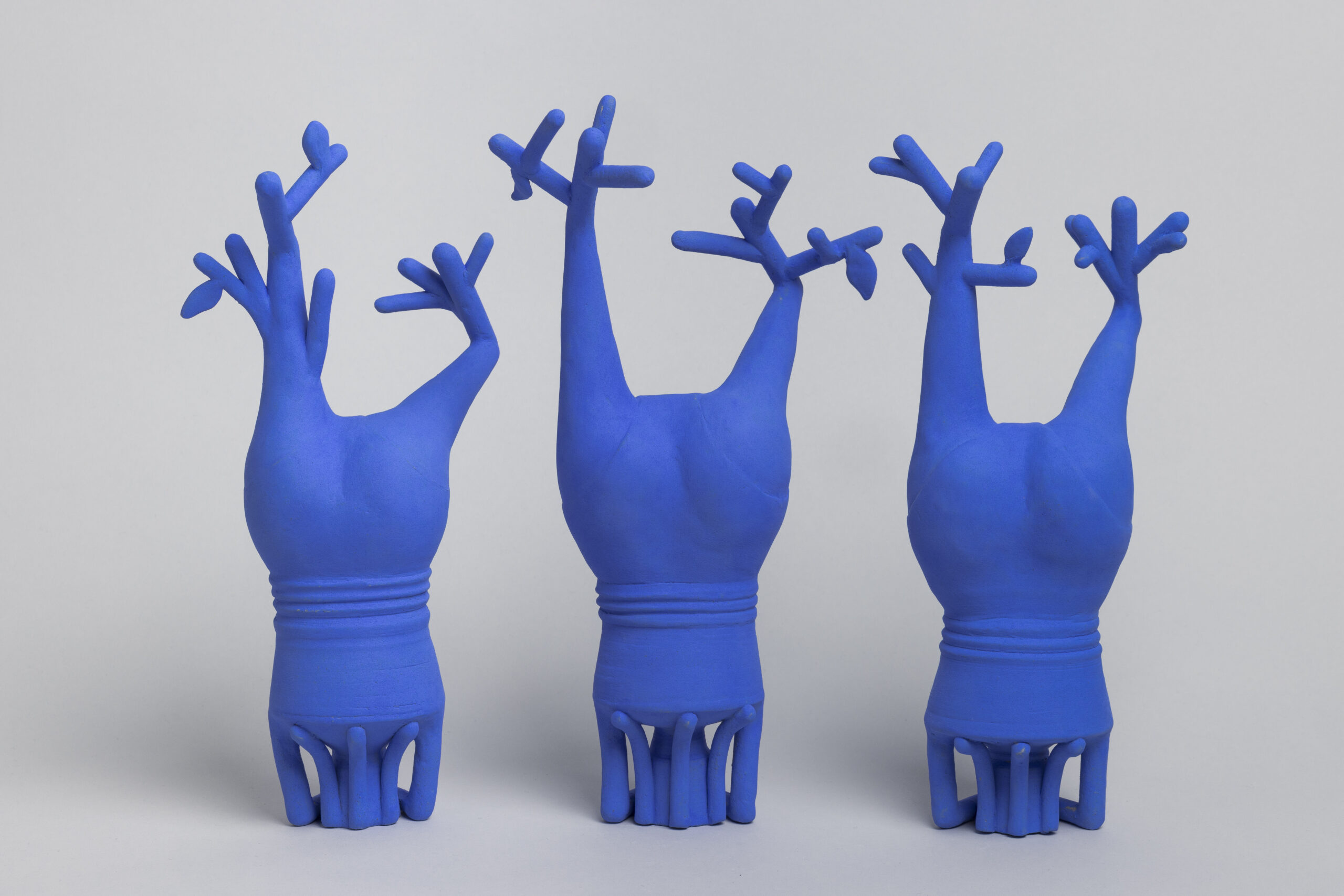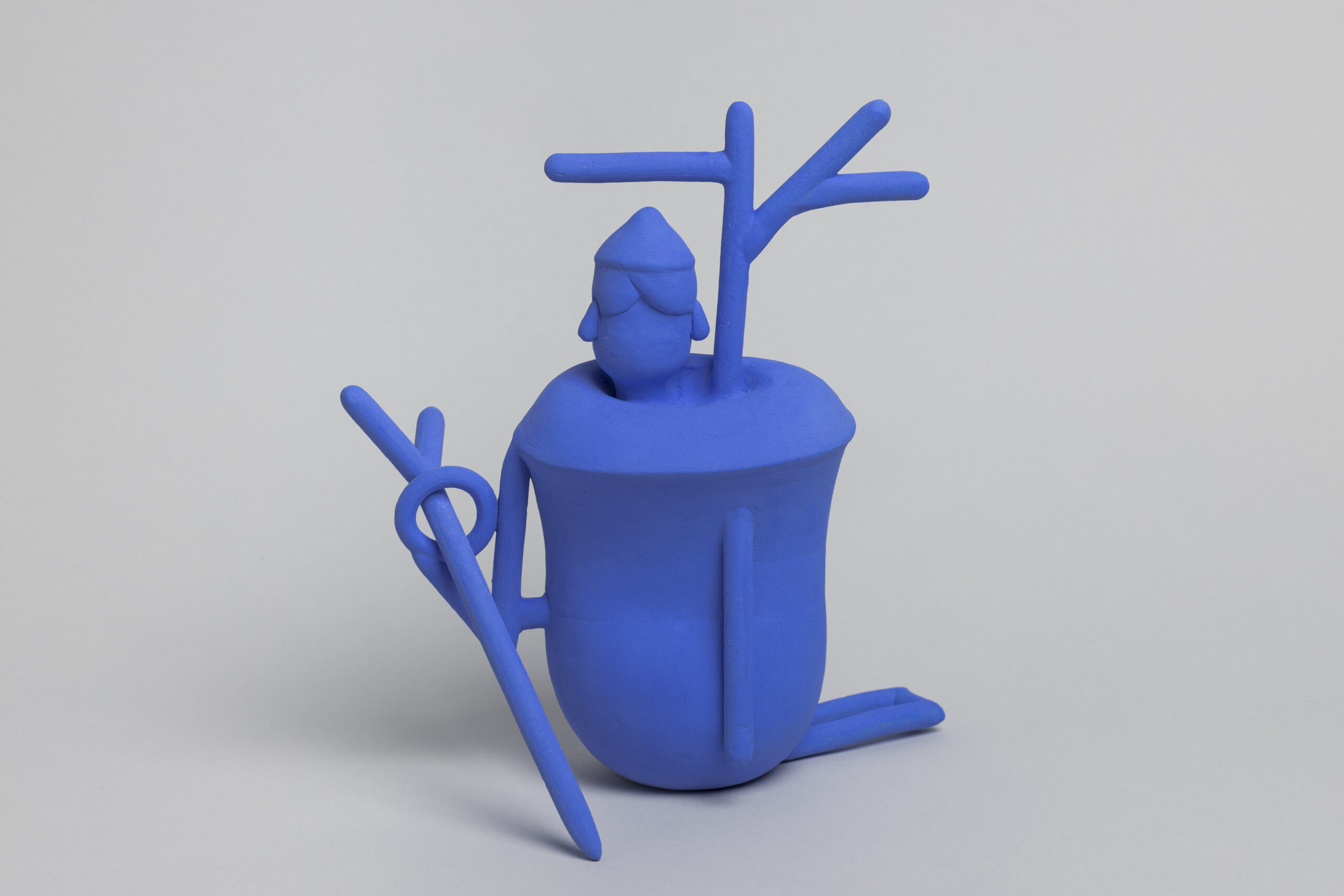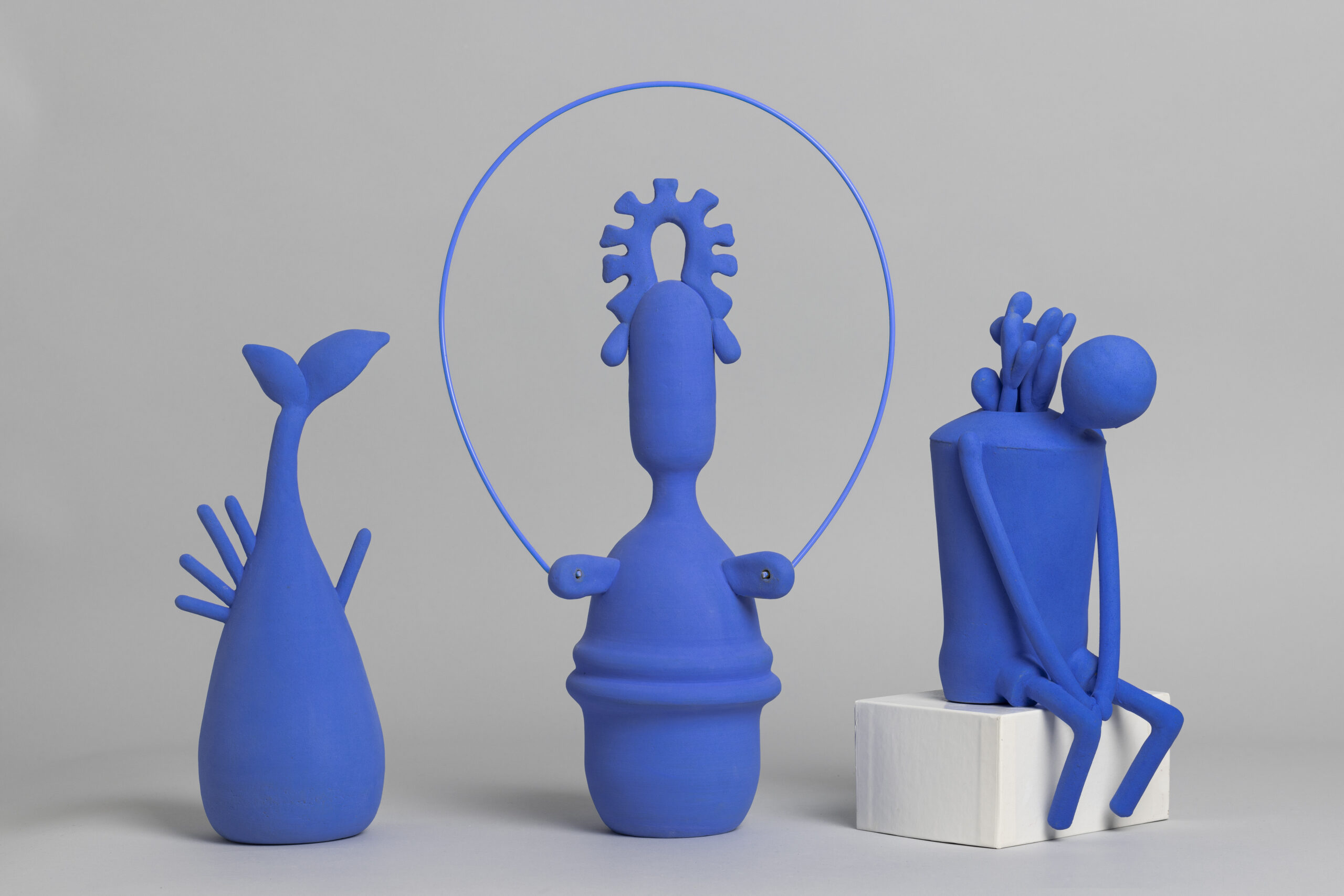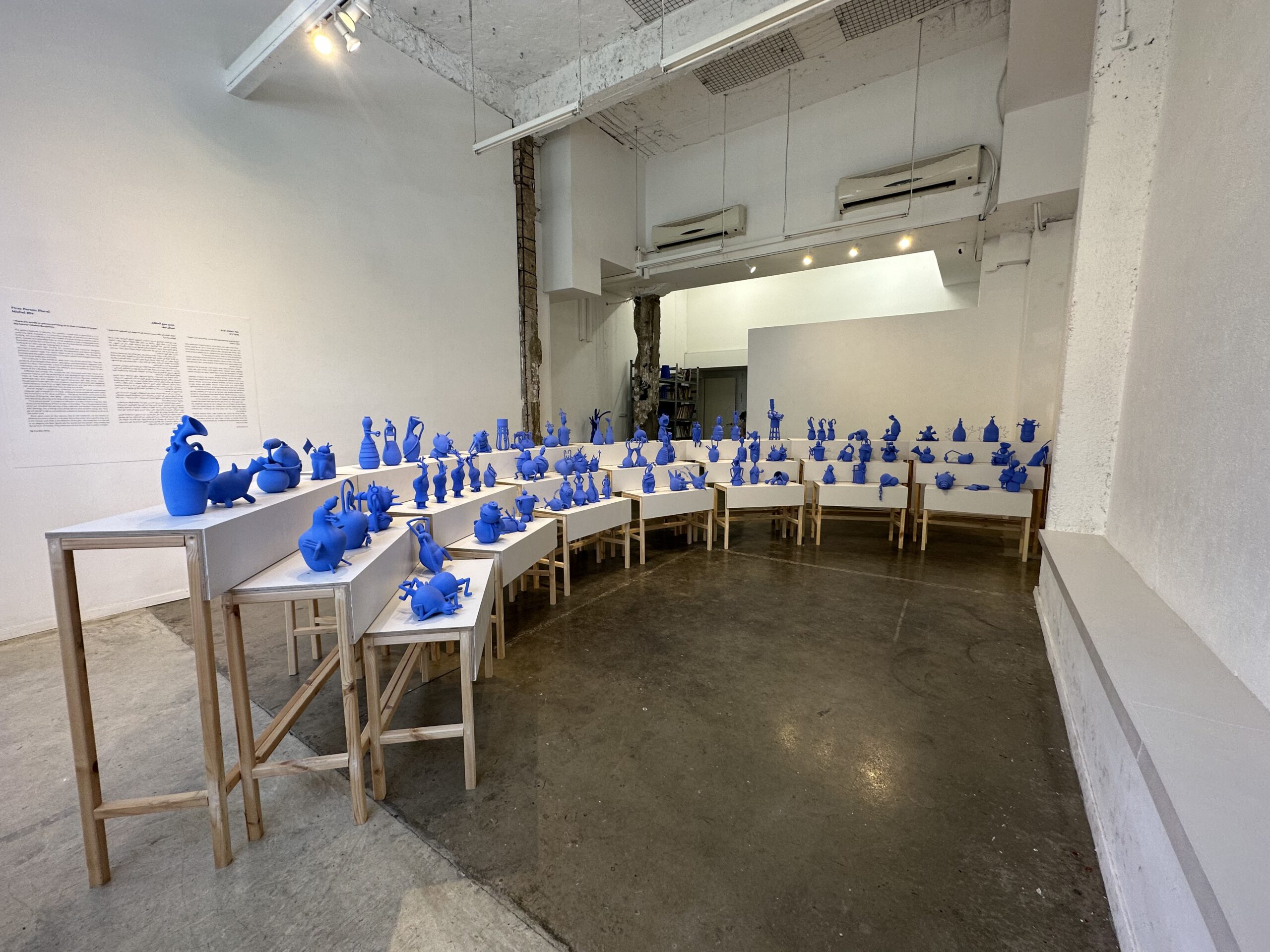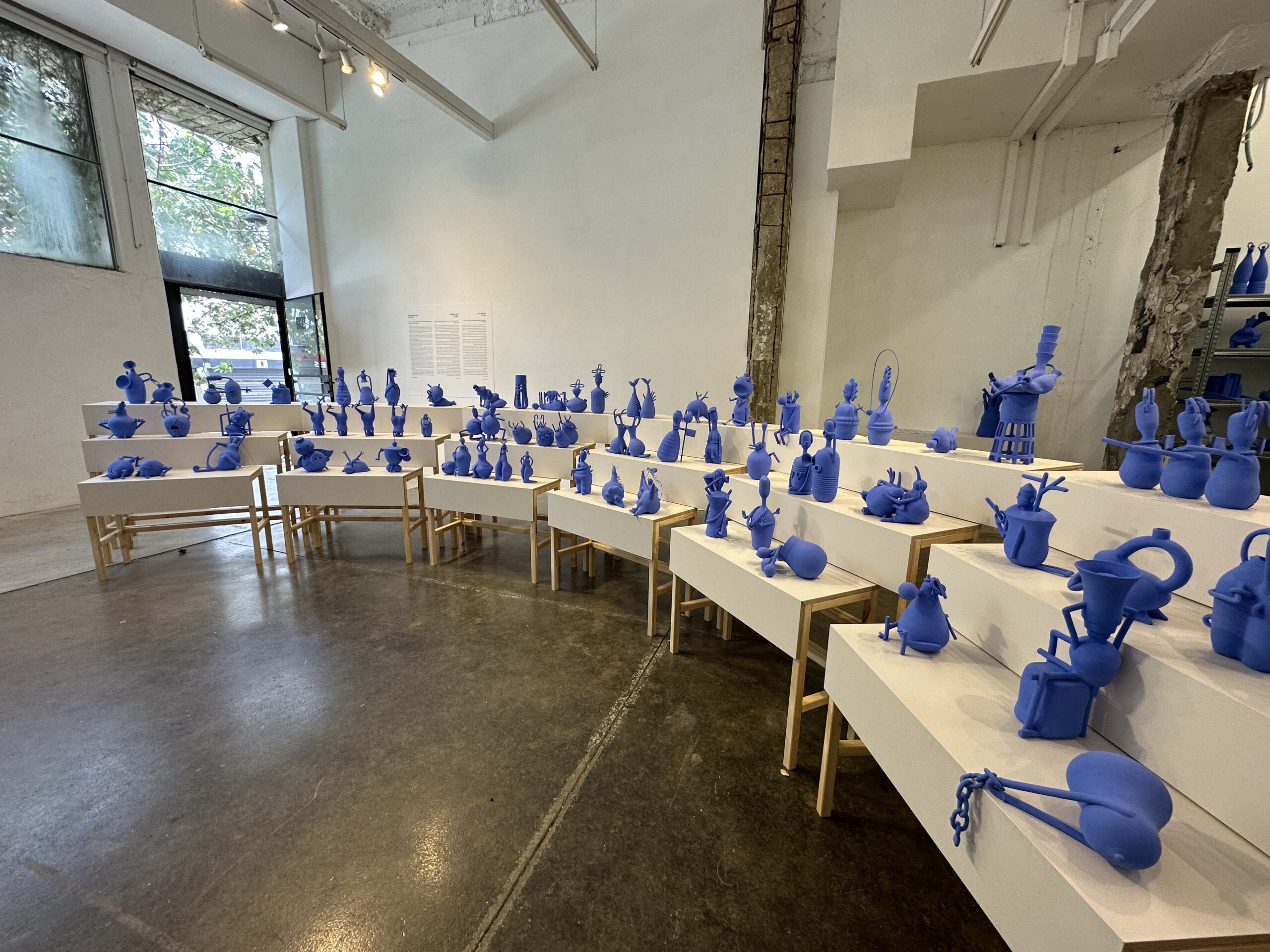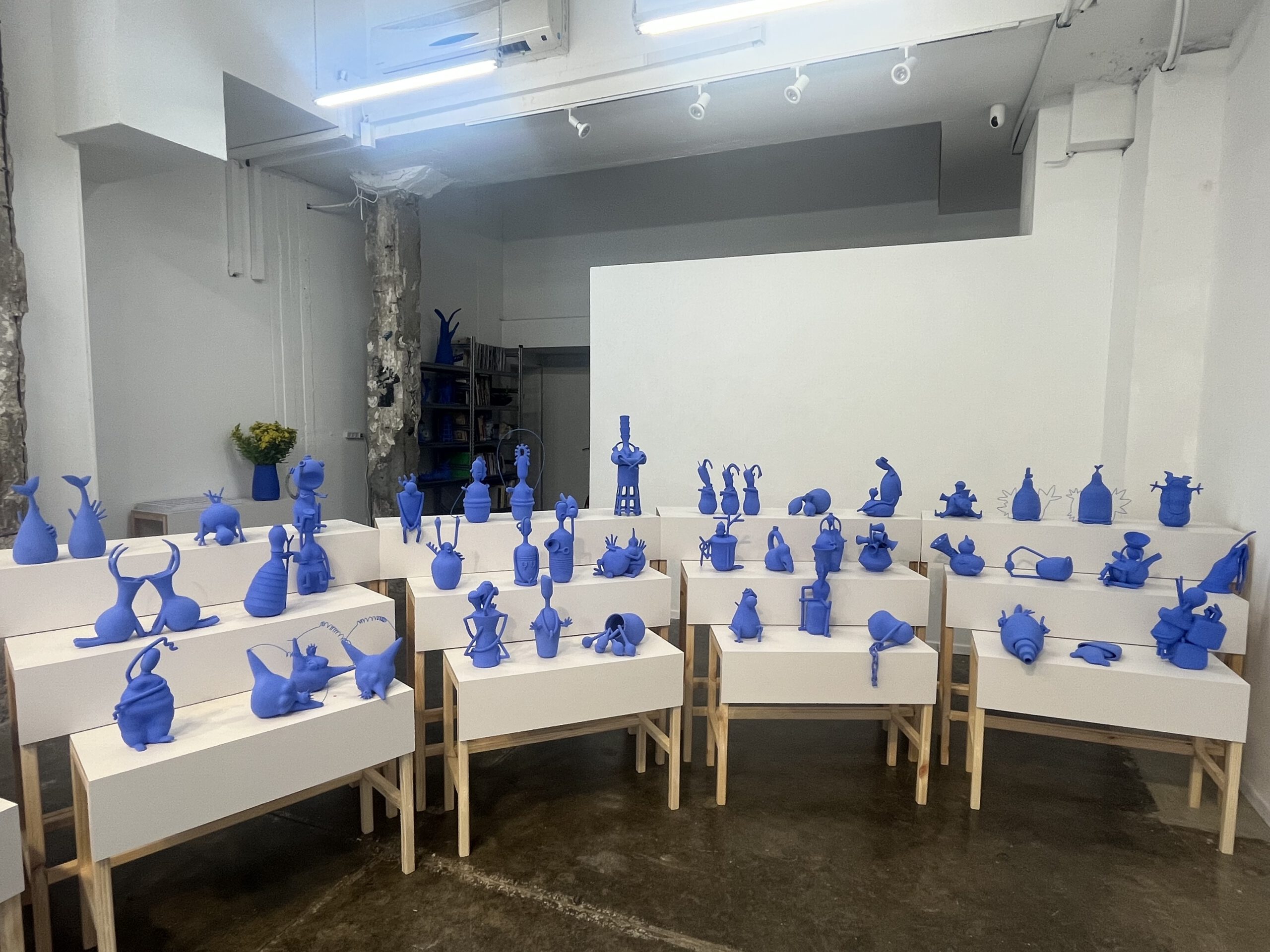Michal Niv
First Person Plural
אוצרוּת Tal Frenkel Alroy
First Person Plural
“There are words or pauses pointing us to that invisible stranger the future”
(Walter Benjamin)
The gallery features a balcony. The ceramic crowd that is gathered in it is uniformly blue, trapped in a meticulous language of wheelwork and hand building. This is a collective that was created and built during an intense year. It grew, evolved and diversified from an inner experience that is inseparable from the events and the spirit of the times. Who are the blue statues and why are they looking at us? Who are we, looking back at them?
About three years ago, Michal Niv, ceramicist and industrial designer, returned to Israel from a long stay abroad. The separation and return during the pandemic period made this native Israeli a bit of a stranger. The dresses of concrete and the public mood led to a complex, painful and charged encounter with the local landscape and body.
The sculptures in the exhibition were born out of this encounter. They are products of prolonged observation, absorption and assimilation, digestion and search for form. This process, a kind of industrial-intuitive set-up of turning an impression into matter, reveals the different and contradictory layers in the nature of the individuals and the group.
Different but similar, the sculptures are imprinted with the traces of a common history, with the archeological and ideological signs that the locals are made of. They are composed in the image of ancient figurines, marked with archetypal signs and charged with typical forms (urn, fish, flag, tower, circle). Placed within frozen gestures and situations, built from elements with repeating characteristics, they form a tight homogeneous unit, but also a cluster of self-absorbed individuals that seek to step out of line.
Michal designs a polyphonic collective. A crowd of hybrid, extroverted creatures, with a mouth or a trumpet, seeking to communicate and bond within the limitations of the body and form. The group dynamics produced by the members of the group – the “gang” – are funny but also compassionate, appealing and disturbing, allowing us to observe but also be reflected in the mirror.
“First person plural” is a pronoun inflection. It is also a distinct linguistic sign of the Zionist literature of the Founders of the State. This is the generation from which we inherited the sanctity of the collective, the faceless mass permeated with ideology, the unifying circle of folk dances and campfire songs. But “first person plural” is also a contradiction, a desire to belong and a failure to do so at the same time.
Rows upon rows on the balcony, like an old notebook, we are invited to observe the show, when it is not clear who is the writer, who is performing, who is the viewer, and what is the direction of the plot. Like characters in a carnival or an allegory, the blue figures are the words and the pauses. They imitate the dying faces of history. They twist around the future, that invisible stranger.
Tal Frenkel Alroy

